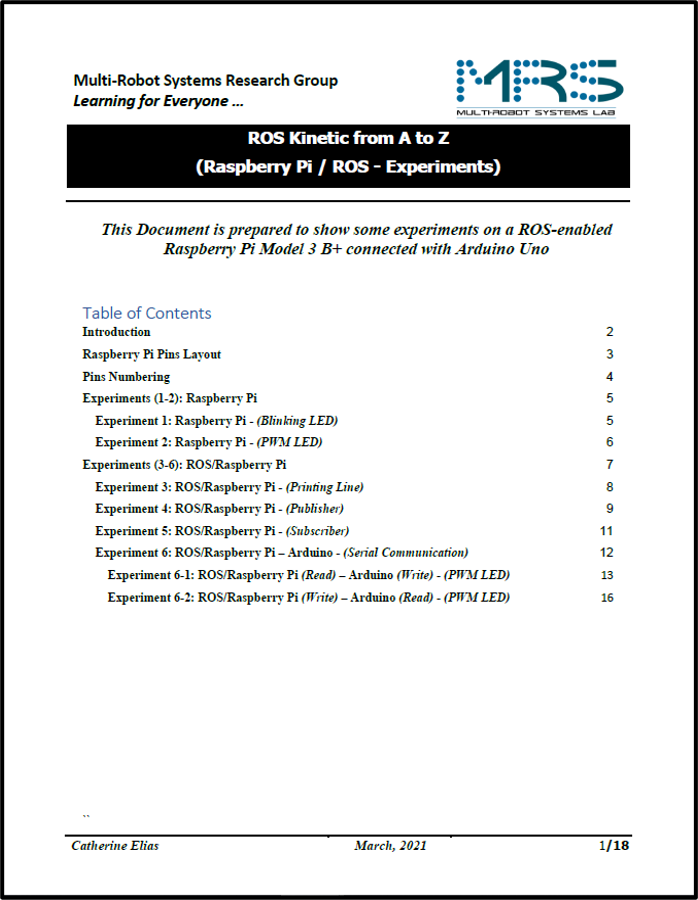Raspberry Pi / ROS - Experiments
|
Raspberry Pi - (Blinking LED) ExperimentThe purpose of this experiment is to write a python code that allows a LED to blink on and off with sampling time of 1 second for 5 times.
|
Raspberry Pi - (PWM LED) ExperimentThe purpose of this experiment is to write a code that allows a LED to have its brightness value set using PWM varying from 0 to 100% with sampling time of 0.05 second.
|
ROS/Raspberry Pi – Arduino - (Serial Communication)
ROS/Raspberry Pi (Read) – Arduino (Write) - (PWM LED) EXPERIMENTThe purpose of this experiment is to write a python code creating a ROS node. This node reads the data sent by the Arduino through serial communication represented by the USB cable.
The received data is sent as a LED brightness value set using PWM varying from 0 to 100%. The node keeps running as long as the node is activated till it is shutdown. (Show the activated nodes, topics, and messages). The set sampling time is 0.05 second and baud rate of 9600. |
ROS/RASPBERRY PI (write) – ARDUINO (read) - (PWM LED) EXPERIMENTThe purpose of this experiment is to write a python code creating a ROS node. This node writes a LED brightness value set using PWM varying from 0 to 100% to be read by Arduino through serial communication represented by the USB cable.
The node keeps running as long as the node is activated till it is shutdown. (Show the activated nodes, topics, and messages). The set sampling time is 0.05 second and baud rate of 9600. |

